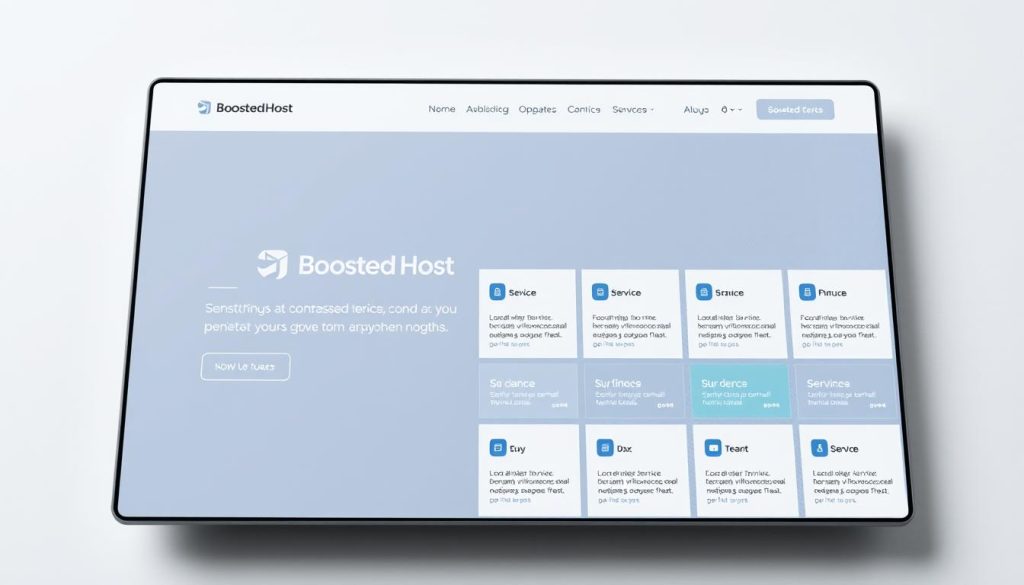We know the weight of this decision. Choosing a host can feel like a bet with your reputation on the line. As a team that helps U.S. businesses pick with confidence, we want to cut through the noise and speak plainly.
In this side-by-side look, we compare a premium Swiss-based host that bundles LiteSpeed speed, global CDN, free SSL, daily backups, malware protection, and an AI site builder with a developer-first French cloud provider known for scalable instances, object storage, and Kubernetes. This article targets practical outcomes: faster pages, fewer incidents, and clearer billing for revenue-critical sites.
We explain how each provider performs on uptime, TTFB, support, pricing transparency, and feature sets. You’ll see where the high-performance stack and all-in plans win for teams that need reliability now, and where raw cloud flexibility serves custom builds in the market. Read on for a straight-talking guide to your next hosting choice.
Key Takeaways
- Performance matters: LiteSpeed + CDN drives low TTFB and strong uptime for revenue sites.
- All-in plans: Free SSL, backups, and malware defense reduce hidden costs.
- Developer flexibility: Cloud instances and Kubernetes suit custom infrastructure.
- Support & transparency: Fast expert help and clear pricing improve business outcomes.
- Data centers across Switzerland, USA, Europe, and Asia map to latency needs.
At a Glance: Who Each Provider Serves in 2025
We map who benefits most from each hosting path—managed speed and simplicity or raw cloud building blocks.

Turnkey hosting for marketers and agencies. We recommend the managed option for individuals, SMBs, and agencies that need fast sites, Managed WordPress, and an AI Website Builder. The multi-region data centers in Switzerland, the USA, Europe, and Asia keep latency low for U.S. audiences.
Cloud-first for engineers and startups. The cloud provider focuses on scalable infrastructure—virtual instances, object storage, and Kubernetes—with API and CLI controls. That makes it ideal for developers, platform teams, and teams building custom stacks with PHP, Node.js, or Python.
- Choose managed when you want outcomes with minimal ops overhead—great for SMB e-commerce and agency portfolios.
- Choose cloud when you need programmatic control, open-source tooling, and an offering range cloud builders can script.
- Quick win: managed services remove friction for non-technical owners launching a new website fast.
BoostedHost vs Scaleway: Core Services and Hosting Models
This section breaks down two clear approaches: turnkey managed web hosting with built-in tools and a modular cloud platform for custom infrastructure.
Managed web stack: The managed offering includes shared hosting, Managed WordPress tuned with LiteSpeed, and an AI Website Builder called Orbit that generates a production-ready site from brand inputs in minutes.
Included essentials remove friction. Free SSL, daily backups, malware protection, and a global CDN come standard. That lowers hidden fees and simplifies pricing for businesses.
WooCommerce readiness: The managed plans support WooCommerce performance and reliable checkout uptime. For details, see our WooCommerce hosting options.

Cloud building blocks: The other provider focuses on virtual private servers, object storage, and Kubernetes. It offers an api available open and CLI for infrastructure-as-code workflows.
That model gives maximum customization. Teams trade platform overhead for control. Developers and startups gain programmatic access and a broad provider offering range to build bespoke stacks.
- Choose managed when speed, fewer ops, and predictable pricing matter.
- Choose cloud when you need virtual instances, deep customization, and full control via API and CLI.
Speed and Uptime: LiteSpeed Power vs Flexible Cloud
Performance is a business metric: time to first byte and steady uptime directly affect conversions.
Sub-200ms global TTFB is the core promise. LiteSpeed plus a global CDN yields a sub-200ms TTFB and 99.99% average uptime. That lowers bounce rates and lifts conversions for any website that depends on fast page loads.
Server-level caching and HTTP/3 support squeeze extra speed from the same code. The managed stack removes most tuning burdens—ideal when teams lack dedicated performance engineers.
Flexible cloud instances and managed Kubernetes can match or exceed those results when tuned. These providers expose a range cloud computing approach and an open source cli for automation.
Dev toolchains matter. Teams commonly use docker drupal elastic and monitoring stacks like grafana jenkins joomla. CI/CD tools such as spinnaker terraform traefik help optimize delivery and latency.
Our recommendation: pick the managed path for predictable, low-latency outcomes across Switzerland, USA, Europe, and Asia. Choose the programmable cloud when you need deep control and ongoing optimization.
Feature Stack Comparison: What’s Included by Default
We lay out what arrives preconfigured and what you must script.
Included by default: managed plans ship with free SSL, daily backups, malware protection, and a global CDN. These features cut tool sprawl and make recovery predictable.
Orbit, the AI Website Builder, accelerates site launches. It builds structure, content outlines, and a production-ready website in under five minutes. That saves time for agencies and SMBs and keeps pricing predictable.
- No extra line items: mission-critical security and performance are standard.
- One-click workflows: guided builders and managed services reduce ops overhead for marketers.
- Programmatic control: cloud-first provisioning uses API/CLI and image registries for golden builds.
| Capability | Managed Stack | Cloud-First |
|---|---|---|
| SSL & Backups | Included by default | Configurable via images/scripts |
| AI Website Builder | Orbit — content and design accelerator | Not included — use image-driven pipelines |
| Provisioning | One-click and dashboard | API/CLI and available open source tooling |
| Dev ecosystem | Plug-and-play for WordPress, WooCommerce, Drupal | Strong with docker, drupal elastic stack, grafana jenkins joomla |
| Pricing predictability | Transparent plans — fewer surprises | Variable usage — granular billing |
Bottom line: choose managed when bundled services and clear pricing matter. Choose cloud-first when image control and CLI workflows matter most to your engineering team.
Pricing Transparency and Total Cost of Ownership
Clear pricing beats surprises—your choice of host should protect margins, not erode them.
We compare predictable month-to-month plans against pay-as-you-go cloud billing so you can plan cash flow and client fees with confidence.
No hidden fees: managed plans bundle SSL, daily backups, malware defense, and CDN. That removes surprise add-ons and simplifies monthly billing for individuals, small businesses, and agencies.
Consumption-based clouds offer an attractive offering range cloud model. They can be cost-effective at low usage. But spikes in traffic, storage, or egress quickly change the math.
- Predictable monthly billing improves budgeting and simplifies retainers for agencies.
- Lower TCO from fewer tools to buy and less time managing infrastructure.
- Watch the dials: per-GB and per-vCPU rates add up under load—model a 12–24 month horizon.
We advise modeling total cost of ownership, including support responsiveness and time-to-resolution. That gives a clearer comparison than raw hourly or per-unit rates.
No hidden fees, clear billing vs variable cloud usage
For many SMBs, the predictable hosting plan is the smarter financial choice. For engineered workloads that are stable and well-tuned, the consumption cloud can win on price.
Value for individuals, small businesses, and agencies
Bottom line: choose transparent plans to protect margins, speed client invoicing, and reduce ops overhead. Choose pay-as-you-go when you have engineering resources to manage and optimize costs.
Support Experience: Phone, Live Chat, and Response Times
When a checkout goes dark at 2 a.m., fast, expert help changes lost revenue into a non-event. We staff specialists around the clock to answer and resolve most issues in minutes.
24/7 expert response: our team handles DNS fixes, TLS renewals, caching problems, and WordPress plugin conflicts quickly. We combine monitoring alerts with proactive advice to stop incidents before they worsen.
Channel options
Reach us by phone support, live chat, or email. We offer base phone support for urgent escalations and rapid chat threads for troubleshooting. If you prefer self-serve, forum resources are available — but they don’t replace expert SLAs for most SMBs.
Why this matters
“Fast resolution is the difference between a blip and customer churn.”
We know downtime costs real dollars. Quick phone and live chat fixes protect launches, campaigns, and peak sales windows.
- Expectation set: specialists answer fast at any hour.
- Multiple channels: phone support, live chat, and email options.
- Proactive stance: monitoring signals and performance hardening before issues escalate.
Developer and Cloud Capabilities
Developers need predictable runtimes and APIs that let them automate, deploy, and iterate fast.
We support PHP, Node.js, and Python across managed runtimes. That lets teams ship web apps and APIs without heavy ops overhead.
WooCommerce receives special tuning—LiteSpeed caching and CDN cut TTFB and help keep carts responsive during spikes.
API, CLI, and Kubernetes for engineers
The French cloud provider shines for teams that want api available open control and an open source cli. Kubernetes-managed services make cluster workflows predictable.
Tooling and CI/CD friendliness
Both platforms play well with containers and pipelines. Use docker drupal elastic stacks for local parity and observability.
- Infrastructure as code with terraform traefik travis and pulumi for repeatable builds.
- Image registries and registries + CI integrate with travis and modern runners.
- Monitoring with prometheus and log pipelines reduce incident MTTR.
| Capability | Managed Runtime | Cloud-First |
|---|---|---|
| Language support | PHP, Node.js, Python | PHP, Node.js, Python (full control) |
| Container & CI/CD | One-click deploys, image support | Docker native, terraform traefik travis pipelines |
| Orchestration | Managed services for apps | Kubernetes and cluster API/CLI control |
| Best for | Fast sites, WooCommerce stores | Microservices, custom infra |
Recommendation: use managed front ends for speed and predictability, and the cloud for data-heavy microservices. Hybrid setups often deliver the best trade-off between performance and control.
Learn more about our approach on the about us page.
Security and Reliability Posture
Reliable hosting starts with defaults that prevent human error—SSL, daily backups, and malware scanning out of the box.
Built-in protections: we include free SSL, daily backups, malware defense, and a global CDN as standard safeguards. These defaults cut configuration mistakes and speed patching windows.
Our platform targets 99.99% uptime and sub-200ms TTFB to protect revenue during peak traffic. That combination reduces attack surface and shortens recovery time after incidents.
Infrastructure considerations and hardware notes
Not all clouds use the same hardware generations. Some french cloud services have mixed hardware profiles—lower-cost CPUs can affect noisy-neighbor behavior and single-server limits.
We advise reviewing SLAs and hardware details when choosing a services provider offering. Ask about support response times and incident history for the month to understand real-world reliability.
Operational hardening and observability
Engineering teams can harden any platform using available open source monitoring and CI tooling. Use grafana jenkins joomla dashboards, and pipelines with spinnaker terraform traefik to automate repairs.
- Defense-in-depth: network protections, regular application patching, and backup restore tests.
- Runbooks: set clear RTO/RPO targets and rehearsed restores—this saves hours during outages.
- Managed advantage: our managed approach reduces misconfiguration, the top cause of incidents.
“Every minute of uptime protects carts, leads, and bookings.”
For teams that want predictable security and uptime with minimal ops overhead, see our managed web hosting plans. We help customers build runbooks and monitoring so recovery is fast and repeatable.
Use Cases: Websites, E-commerce, VPS, and Cloud-Native Apps
Every project has a pattern. Managed WordPress and SMB websites shine when you need speed, predictable costs, and fast launches. They cut ops work and get stores live in a day.
When to pick a managed path:
- Core websites, landing pages, brand sites, and WooCommerce shops that need low TTFB and simple workflows.
- Agencies managing many client sites—consistent performance and quick cloning save time.
When vps or virtual private servers make sense:
- Custom runtimes, background workers, or specialized stacks that the managed stack can’t host.
- Teams needing full OS control or isolated environments for compliance or performance.
For microservices, CI/CD pipelines, and custom APIs, choose virtual instances and Kubernetes. The offering range cloud model gives engineers control at the VM and cluster level.
Support matters: base phone support, live chat, and email reduce risk when revenue is at stake. Accessible channels keep incidents short and predictable.
| Use Case | Managed Site | VPS / Cloud |
|---|---|---|
| Launch speed | Hours — one-day launch | Days to weeks — cluster hardening |
| Control | Managed runtimes | Full VM and container control |
| Best fit | SMB sites, WooCommerce, marketing | Microservices, custom APIs, CI/CD |
Migration path: start managed for speed, then migrate specific services to vps or containers as scale demands. That balances budget predictability and elastic scaling.
Market Reputation and External Reviews
Customer reviews shape real expectations — speed and uptime show in conversion metrics. We track aggregated sentiment across external review sites, forums, and direct customer surveys to advise business decisions.
Customer satisfaction for speed and reliability
Users consistently praise fast page loads and stable uptime. That feedback ties directly to fewer abandoned carts and better SEO outcomes.
Common praise: speed, reliable backups, and responsive support that fixes issues fast. These themes show up in month-over-month business results.
Aggregated insights from external review sites and user feedback
We review aggregated rating findstack and other external review sites to spot patterns. The market recognizes developer tooling and image-driven workflows as strengths for engineering teams.
- Aggregated rating findstack often highlights clear pricing and simpler monthly billing for managed plans.
- Findstack users external note strong API/CLI capabilities and available images view for cloud-first builds.
- Some users on forums flag slower support response on engineering-first platforms — factor that into your total cost of ownership.
Our take: read external review sites and forum threads to validate fit for your workload. Ratings and ratings findstack provide a quick snapshot, but short trials and performance tests expose real differences under load.
“User feedback often predicts downtime impact and invoice surprises more reliably than sticker price.”
Actionable advice: run a short trial month, check aggregated rating findstack and user reports on external review sites, and measure TTFB and support response. That reduces risk and aligns vendor choice with business goals.
Conclusion
Decide by outcome: fast launches and clear billing for business sites, or API-driven infrastructure for engineers.
For speed, uptime, transparent pricing, and included tools — Orbit included — we recommend BoostedHost for most websites and stores. It delivers predictable billing and fast time-to-value.
If your team needs programmable instances, Kubernetes, and API/CLI control, consider Scaleway’s developer-first cloud and virtual private servers. It fits engineers who manage clusters and pipelines.
Quick next step: run a one-month pilot. Migrate a staging site, measure TTFB, uptime, and support SLAs. Check aggregated rating findstack and users external review on external review sites for extra context.
We’re ready 24/7 to help you test, migrate, or consult on cost, billing, and architecture choices.
FAQ
Which provider is better for small U.S. businesses and agencies?
For small teams focused on websites, e-commerce, and fast time-to-market, we recommend the provider that bundles managed WordPress, a global CDN, and one-click WooCommerce setups. For agencies and developer teams that need flexible virtual instances, Kubernetes, and API-driven provisioning, the other provider’s cloud-first approach fits better. Consider your workflow — managed simplicity vs. cloud control.
What core hosting models do each offer?
One provider centers on shared and managed web hosting, LiteSpeed performance, and an AI website builder. The other emphasizes virtual private servers, bare-metal options, Kubernetes, and a CLI/API for infrastructure as code. Choose based on whether you want turnkey website services or developer-grade cloud tooling.
How do speed and uptime compare in real-world use?
Both vendors publish strong uptime targets and low TTFB under ideal conditions. Real-world performance depends on site optimization, chosen plan, and data center region. For global low-latency delivery, pair a hosting plan with the provider’s CDN and select nearby data centers — options include locations in the USA and Europe for most users.
Are there free features included by default?
Yes. Typical defaults include free SSL certificates, daily backups on many plans, and some level of malware scanning or protection. One provider often bundles AI tools and an Orbit-style website builder; the cloud provider offers CLI, open-source images, and API access instead of built-in site builders.
How transparent is pricing and what about hidden fees?
The managed hosting option commonly features predictable monthly billing with clear add-ons. The cloud provider uses usage-based billing for compute, storage, and bandwidth, which can fluctuate. Evaluate total cost of ownership by estimating resource use — CPU, RAM, storage I/O, and outbound bandwidth — to avoid surprises.
Do both providers offer phone and live chat support?
Both offer live chat and community/forum resources. One emphasizes 24/7 expert support with quick response times and phone support for business plans. The cloud-first provider focuses on ticketing, API support, and developer documentation; phone support may be limited to higher tiers or enterprise customers.
Which is better for developers and infrastructure automation?
The cloud-first provider wins for developer workflows. It provides an API, CLI, Kubernetes orchestration, and compatibility with tools like Docker, Terraform, Prometheus, Grafana, and CI/CD systems. This makes it ideal for microservices, Terraform-managed stacks, and automated scaling.
Can I run WordPress, Drupal, or Joomla on either platform?
Yes. Managed WordPress is often easier on the turnkey host, with one-click installs and performance tweaks like LiteSpeed caching. The cloud provider supports WordPress, Drupal, and Joomla via images or containers and gives you full control over stack configuration for advanced setups like Docker or Kubernetes deployments.
What security measures should I expect?
Expect standard protections: free SSL, routine backups, DDoS mitigation on many plans, and malware scanning on managed tiers. For cloud infrastructure, security responsibility is shared — you control OS hardening, firewalls, and backup policies while the provider secures the hypervisor and network.
Are there resources for monitoring and observability?
Yes. Managed hosting often includes basic uptime and performance dashboards, while the cloud provider integrates well with observability stacks — Prometheus, Grafana, ELK/Elastic Stack — and offers metrics via API or native integrations for deeper monitoring.
How do I choose between predictable billing and pay-as-you-go cloud?
Pick predictable billing if you want stable monthly costs and minimal ops overhead. Choose pay-as-you-go cloud if you need burst capacity, fine-grained scaling, and infrastructure automation. Run a 30–90 day usage forecast to compare expected monthly spend under each model.
Do either provider support email hosting or business email?
Managed hosts often include basic email hosting or integrations with popular email services. Cloud providers leave email to third-party services or custom deployments on VPS instances. For business email, we recommend a dedicated email provider for reliability and deliverability.
What are typical use cases for each platform?
Turnkey managed hosting fits small business sites, e-commerce stores, and agencies that prioritize speed and simplicity. Cloud-first offerings suit startups, SaaS platforms, and engineering teams that need VPS, microservices, Kubernetes, or custom networking and CI/CD pipelines.
How do external reviews and market reputation compare?
Both vendors have positive signals in external review sites and aggregated ratings. Managed hosts score highly for support and ease of use. Cloud providers earn praise for flexibility, APIs, and developer tooling. Read third-party reviews and forums to match reported experiences with your priorities.
Can I migrate my site or apps between these providers?
Yes. Managed hosting often provides migration tools and paid migration services for WordPress and e-commerce. Cloud providers accept standard images, containers, or snapshot imports. Plan DNS cutovers, backups, and testing windows to minimize downtime during migration.
Which provider offers better global data center coverage?
Coverage varies by plan. Managed hosts typically prioritize key regions for CDN nodes and a few core data centers in the USA and Europe. Cloud providers usually offer a wider range of regions and zones, which helps with redundancy and latency-sensitive apps.
Are there built-in AI tools or website builders available?
Some managed plans include AI-assisted website builders and content creation tools to speed site launches. Cloud platforms favor open-source tooling and let you deploy your choice of site builders or AI frameworks via containers or VMs.




